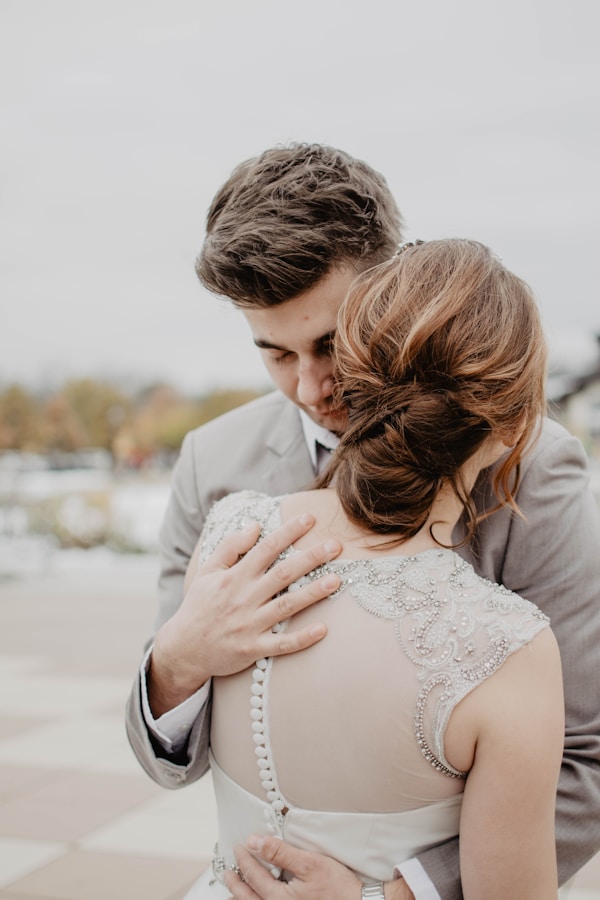Mastering Delicate Beadwork: Essential Techniques for Sewing Wedding Dresses
Mastering Delicate Beadwork: Essential Techniques for Sewing Wedding Dresses
Understanding the Art of Delicate Beadwork in Wedding Dress Making
Wedding dresses have always held a special place in the hearts of brides and designers alike. One of the most intricate aspects of creating a stunning wedding dress is handling delicate beadwork during the sewing process. This not only requires technical skill but also a deep appreciation for the artistry involved. In this article, we will explore various techniques and tips for managing delicate beadwork while ensuring a flawless finish for the perfect wedding gown.
What is Delicate Beadwork?
Delicate beadwork involves sewing small beads onto fabric, often embellishing dresses, particularly bridal gowns. This intricate technique adds texture, depth, and a touch of luxury to the design. However, handling delicate beadwork can be challenging, especially during the sewing process when precision is paramount.
Why is It Important to Handle Beadwork Carefully?
When sewing Wedding dresses, especially those adorned with beadwork, it is crucial to handle materials with care. Improper handling can lead to damage, uneven stitching, or even loss of beads. Beadwork adds a unique visual appeal to the gown, making it essential to maintain its integrity throughout the sewing process.
| Common Delicate Beadwork Materials | Advantages | Disadvantages |
| Glass Beads | High shine and variety of shapes | Can break easily |
| Seed Beads | Small and versatile; ideal for detailed work | Time-consuming to apply |
| Crystal Beads | Adds elegance with sparkle | More expensive and may require special care |
Essential Tools for Working with Delicate Beadwork
To handle delicate beadwork effectively, having the right tools is paramount. Here are some helpful tools you'll want to keep in your sewing kit:
- Sewing Needles: Use thin, sharp needles suitable for delicate fabrics and beads.
- Beading Thread: Choose a strong, fine thread that can withstand tension without breaking.
- Embroidery Hoop: This keeps the fabric taut while you work, ensuring even stitching.
- Beading Awl: Perfect for guiding beads into place on your fabric.
- Jewelers’ Pliers: Helpful for attaching clasps or making small adjustments.
Techniques for Sewing Delicate Beadwork
Successfully integrating beadwork into your wedding dress involves several techniques. Here are some steps to guide you through the process:
1. Planning the Design
Before you start, sketch the bead placement on your dress design. Consider the overall flow and how the beadwork complements the fabric. This can help you visualize the final product while preventing over-embellishment.
2. Preparing the Fabric
Pre-wash the fabric to remove any finishing agents that might affect bead adhesion. Use a gentle detergent, and let it dry completely before starting.
3. Marking the Placement
Using tailor's chalk or disappearing ink, mark on the fabric where each bead will go. This keeps your design consistent and organized while you work.
4. Attaching the Beads
Begin attaching the beads by threading them onto your needle and securing them in place. Use a combination of knotting techniques or tack stitches to ensure they stay put. Always maintain consistent tension to avoid any puckering.
5. Finishing Touches
Once the beadwork is complete, take the time to inspect each section for loose threads or beads. Gently clean the surface to eliminate any stray fibers or dust, giving your wedding dress a polished look.

Common Challenges and How to Overcome Them
While sewing delicate beadwork, several challenges might arise. Here are a few of these issues along with practical solutions:
- Beads Falling Off: Ensure you're using the right type of thread and sewing techniques. Consider reinforcing with a small dot of fabric glue behind the bead.
- Stitching Puckering: If puckering occurs, check the tension on your thread and ensure that you’re not pulling too tight. Adjust as needed.
- Fabric Damage: Handle the fabric with care. Use a needle that is appropriate for the fabric weight and type to reduce damage risks.
Tips for Maintenance and Care
After you’ve successfully sewn the beadwork on your wedding dress, it’s crucial to maintain it properly. Here are some tips:
- Storage: Store the dress in a cool, dry place away from direct sunlight. Use a breathable garment bag.
- Cleaning: If needed, consult a professional dry cleaner experienced with delicate fabrics and beadwork.
- Repairs: If any beads come loose or fall off, keep a small repair kit handy for quick resolutions.
Conclusion
Handling delicate beadwork during the sewing of a wedding dress is not just about technical ability; it’s about passion and appreciation for the artistry involved. By following the techniques outlined above and being mindful of the common challenges, you can create a breathtaking gown that will leave a lasting impression. Remember, the beauty of beadwork lies not only in its appearance but in the love and care sewn into every detail. So take your time, plan wisely, and enjoy the creative journey!
Final Note: When embarking on a wedding dress project, always keep in mind the delicate nature of beadwork and the importance of precision. With thorough preparation and the right techniques, you can ensure that your masterpiece will be cherished for years to come.
